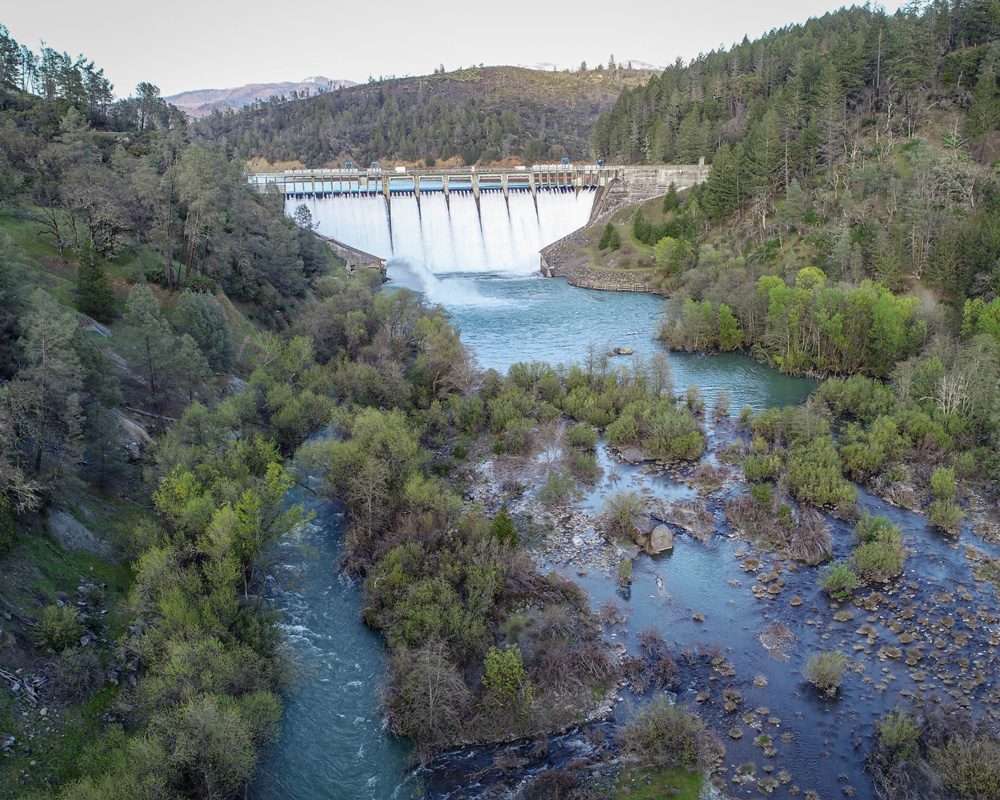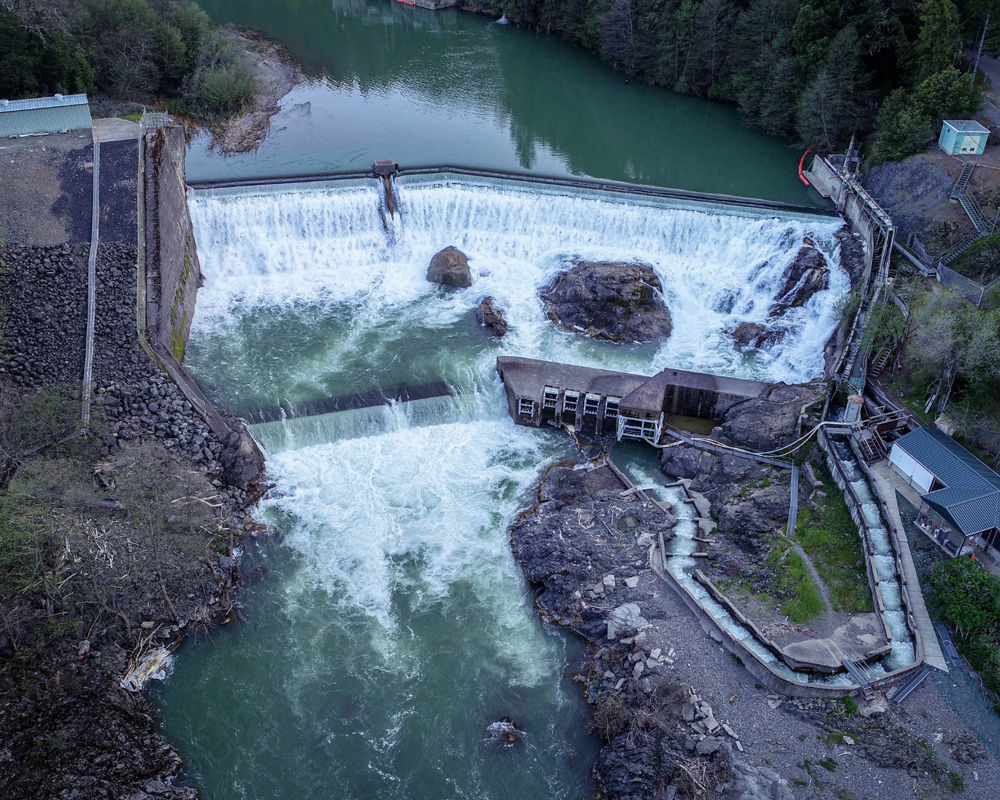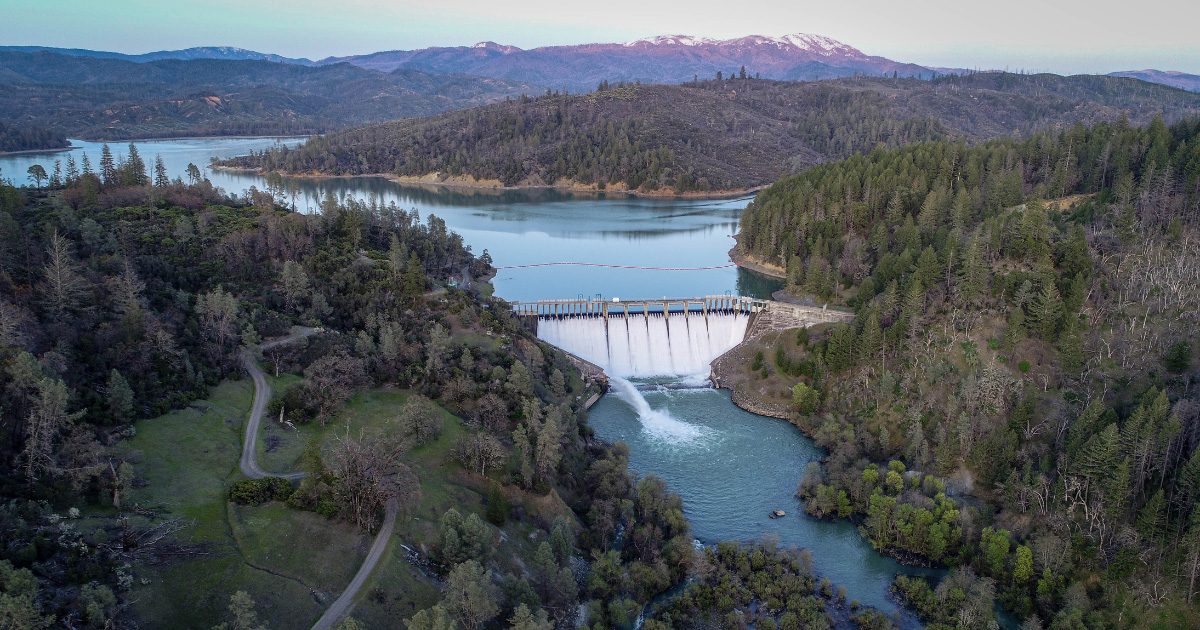CalTrout and Partners Sue PG&E over Harms to Eel River Salmon and Steelhead
A coalition of five commercial fishing and conservation groups, including California Trout, have filed suit in federal court charging that Pacific Gas and Electric Company’s Potter Valley Hydroelectric Project on the Eel River is illegally harming salmon and steelhead listed under the federal Endangered Species Act.
Specifically, the lawsuit charges PG&E with maintaining and operating the Potter Valley Project in a manner that harms and harasses Coastal California Chinook salmon and Northern California steelhead trout, amounting to illegal “take” of these species. In addition to CalTrout, the suit was filed by Trout Unlimited, Friends of the Eel River, Pacific Coast Federation of Fishermen’s Associations, and the Institute for Fisheries Resources. Legal representation for the groups is being provided by Earthjustice and Shute, Mihaly & Weinberger LLC.
The Potter Valley Project includes two dams, Scott Dam and Cape Horn Dam, which impede fish passage and block access to hundreds of miles of critical, high quality spawning and nursery habitat for Chinook salmon, steelhead trout, and pacific lamprey. PG&E is in the early phases of planning to decommission the facilities, which the company no longer wants due to the high costs associated with operating the aging structures. The hydroelectric portion of the Project no longer produces electricity after a transformer failure in July of 2021.
“These obsolete dams are harming fish populations in several ways,” said Matt Clifford, California Director of Law and Policy for Trout Unlimited. “In addition to blocking the migration of both adult and juvenile salmon, the operation of the Project results in stream temperatures that are too hot for these populations to recover. We’re asking the court to ensure PG&E operates the facilities in a way that will preserve fish populations so that they will be able to take advantage of dam removal when it occurs.”
The National Marine Fisheries Service (NMFS) has made it clear to PG&E and federal dam regulators that keeping ESA-listed Chinook and steelhead populations off extinction’s edge in the near future will require immediate changes to PG&E’s operations of the Potter Valley Project. In March 2022, NMFS wrote that the Potter Valley Project “is causing take of ESA-listed salmonids in a manner not anticipated in the (2002 Biological) Opinion and from activities not described in the Opinion.” This May 11, NMFS noted that the “Cape Horn Dam Fish Passage Facility currently does not have ESA take coverage and is likely non-compliant with NMFS fish passage guidelines.”
“Both Scott and Cape Horn dams are clearly causing take of Eel River salmon and steelhead. To the extent they ever had a permit to cause those harms, PG&E no longer enjoys those legal protections,” said Clifford.
The lawsuit makes several specific claims against the utility for operating the facilities in a manner that harms native fish. These claims include maintaining water temperatures below the dams that are too high for salmon and steelhead; operating Cape Horn Dam and its fish passages facilities in a manner that directly causes injury and death to species listed under the Endangered Species Act; blocking access to high-quality habitat above the dams; and making it difficult for juvenile fish to migrate out to sea.


“We expect PG&E to propose the removal of both Eel River dams in this fall’s decommissioning plan. Scott Dam faces serious seismic safety concerns and has no fish passage,” said Alicia Hamann, Executive Director for Friends of the Eel River. “But Cape Horn dam is also very problematic for fish and the ecological function of the river. The fishway at the dam harms and harasses fish whose populations are already severely depressed. Fish ladders are really difficult to operate in a sediment-rich river like the Eel and PG&E has been operating this ladder for years despite known risk to these protected species. The best move for PG&E and the Eel River is to remove both dams as soon as possible.”
PG&E revealed in March of this year that the larger of the two dams, Scott Dam, is at higher risk of failure in an earthquake than was previously understood. Due to the increased danger, state dam regulators will no longer allow the Lake Pillsbury reservoir to be fully filled. PG&E is scheduled to file a draft decommissioning plan with the Federal Energy Regulatory Commission (FERC) in November of 2023. The plan will spell out the specifics of how the utility plans to wind down Project operations for good and how it plans to deal with the facilities.
"The real solution here is to completely remove these obsolete dams from the river,” said Redgie Collins, Legal and Policy Director for California Trout. “We applaud PG&E for seeking to decommission this Project, but in the interim, they need to operate the Project in a way that reduces its impact on fish and is compliant with the law. We understand that the dams could be out in five years or perhaps even less, but PG&E needs to comply with the law starting today.”
Salmon season is closed this year for the second time,” said Vivian Helliwell, Watershed Conservation Director for the Pacific Coast Federation of Fishermen’s Associations. “West Coast salmon and steelhead populations are really struggling right now, and along with them our coastal and inland communities that rely on these fish for food and jobs.”
The Eel River was once one of the most productive salmon rivers in California with returns of commercially important Chinook salmon estimated to be as high as 800,000 fish in good years.
“The poor operation of the Potter Valley Project by PG&E is directly impacting the fish these communities rely on,” added Helliwell. “For our coastal fishing families, fixing these issues can’t come soon enough. We need these populations to be healthy enough to support a harvestable surplus above the minimum numbers needed for delisting. The Eel River has the potential to support that kind of recovery.”





